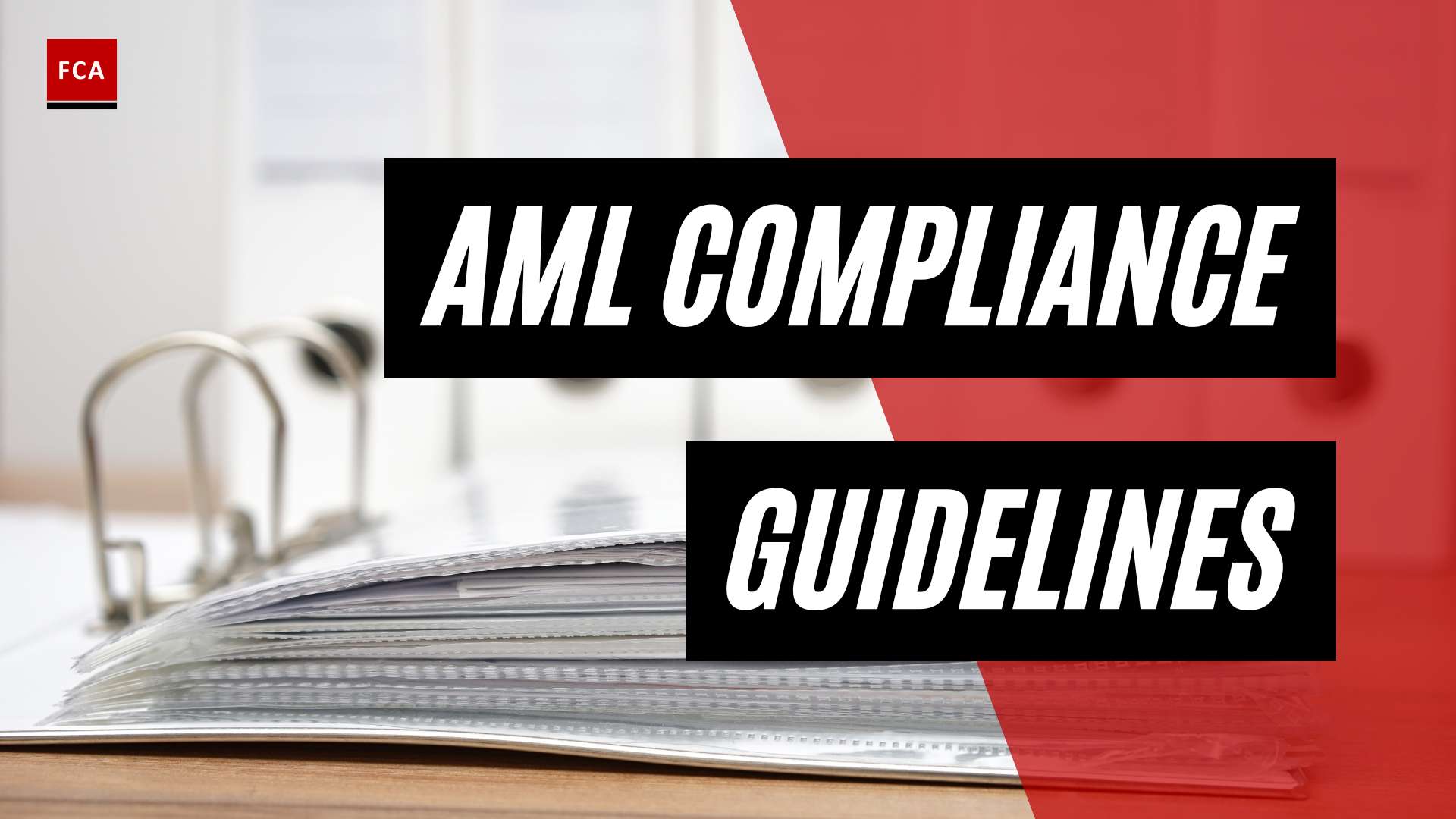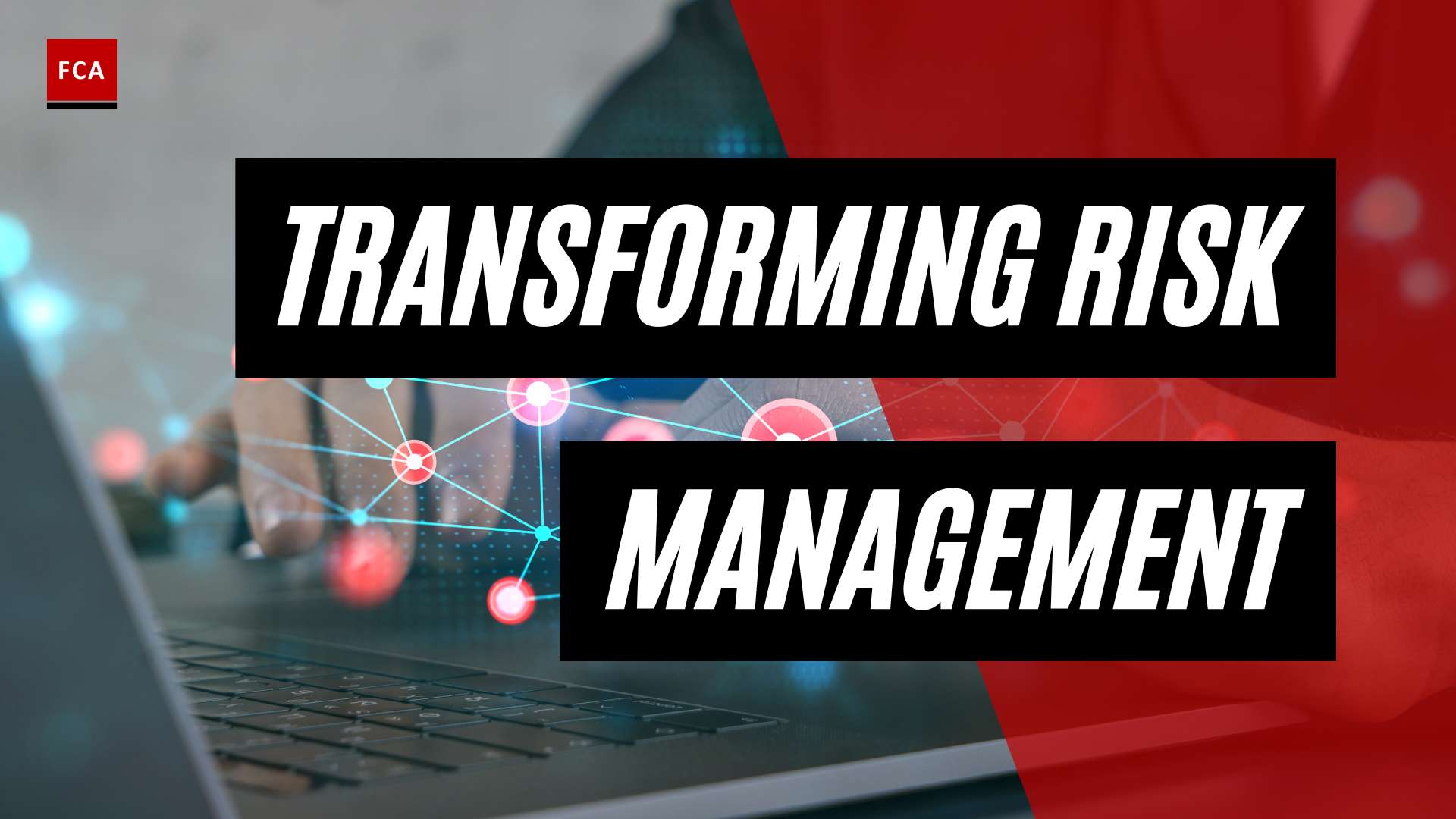Understanding ESG in AML
The intersection of Environmental, Social, and Governance (ESG) factors and Anti-Money Laundering (AML) compliance has gained significant attention in recent years. It is increasingly recognized that incorporating ESG due diligence into AML programs can enhance risk management and strengthen overall compliance efforts.
The Intersection of ESG and AML
ESG factors refer to environmental, social, and governance considerations that impact the sustainability and ethical impact of a company. On the other hand, AML focuses on preventing and detecting money laundering and other financial crimes. The connection between ESG and AML arises from the recognition that environmental crimes, social issues, and governance failures can be linked to money laundering activities.
Criminals may exploit ESG-related risks for money laundering purposes, making it crucial for financial institutions to enhance their AML due diligence procedures to adequately address these risks. The blending of legal and illegally-obtained assets across supply chains and the challenges of cross-border enforcement contribute to the complexity of tracking and prosecuting offenses related to ESG risks.
Importance of ESG Due Diligence in AML Compliance
To effectively manage the risks associated with ESG factors, financial institutions are advised to conduct enhanced due diligence (EDD) as part of their AML compliance programs. EDD involves a deeper level of scrutiny to identify and manage risks related to ESG factors.
Incorporating ESG due diligence into AML compliance programs offers several benefits. Firstly, it enables improved risk management by considering a broader range of factors that can impact an institution’s operations. By integrating ESG factors into risk assessments, organizations can gain a more comprehensive understanding of potential risks and make informed decisions.
Secondly, ESG due diligence enhances reputation and compliance efforts. As ESG has emerged as a framework for responsible and sustainable business practices, integrating ESG considerations into AML programs demonstrates a commitment to ethical standards and aligns with regulatory expectations and industry standards. This alignment can help build trust with stakeholders and enhance the institution’s reputation.
By recognizing the connection between AML and ESG, financial institutions can strengthen their compliance programs and contribute to sustainable and accountable business practices. Effective ESG due diligence involves understanding how money flows through a business, which is a core capability of AML programs. By leveraging AML safeguards, organizations can assess ESG integrity, mitigate associated financial risks, and demonstrate a commitment to responsible and sustainable operations.
The incorporation of ESG factors in AML compliance programs is not only a regulatory expectation but also an opportunity to enhance risk management, strengthen reputation, and align with evolving industry standards. As the relationship between AML and ESG continues to evolve, financial institutions should stay abreast of regulatory developments and leverage technological advancements to effectively integrate ESG considerations into their AML programs.
Incorporating ESG Factors in AML Programs
As anti-money laundering (AML) programs evolve, the integration of environmental, social, and governance (ESG) factors has become increasingly important. Incorporating ESG considerations into AML programs allows financial institutions to strengthen their risk mitigation strategies and align with regulatory expectations. In this section, we will explore enhanced due diligence (EDD) for ESG risks and the challenges and considerations involved in ESG due diligence.
Enhanced Due Diligence (EDD) for ESG Risks
To effectively address ESG risks in AML compliance, financial institutions are advised to conduct enhanced due diligence (EDD). EDD involves a more rigorous assessment of customers and counterparties to identify and manage risks associated with ESG factors. This includes thoroughly analyzing the environmental impact, social practices, and governance structures of entities involved in financial transactions.
EDD for ESG risks goes beyond the traditional AML due diligence process by considering non-financial factors that may pose risks related to money laundering activities. It requires financial institutions to gather additional information, perform deeper analysis, and establish risk-based controls tailored to the specific ESG risks identified. By implementing EDD for ESG risks, financial institutions can enhance their ability to detect and prevent illicit financial activities associated with ESG factors.
Challenges and Considerations in ESG Due Diligence
While the integration of ESG into AML compliance is gaining momentum, there are challenges and considerations that financial institutions need to address. One challenge is the lack of standardized methodologies for assessing ESG risks. The absence of uniform frameworks and metrics makes it difficult to compare and evaluate ESG-related risks consistently across different entities and industries (Science and Scientific Research Publishing).
Another consideration is the absence of formal regulatory guidelines in some jurisdictions regarding ESG due diligence. Financial institutions operating in these jurisdictions must proactively establish their own risk assessment frameworks and procedures to effectively incorporate ESG factors into their AML programs.
Additionally, financial institutions need to ensure they have access to reliable and up-to-date ESG data and information. This may require partnerships with reliable data providers or the development of internal data analysis capabilities. Having accurate and comprehensive ESG data is crucial for conducting thorough risk assessments and making informed decisions in AML processes.
Despite these challenges, financial institutions that successfully navigate the complexities of ESG due diligence can benefit from improved risk management, better decision-making, and enhanced reputation. By aligning with regulatory expectations and industry standards, financial institutions can demonstrate their commitment to responsible and sustainable business practices.
In the next sections, we will explore the connection between ESG risks and money laundering, the benefits of incorporating ESG in AML compliance, and the alignment of AML and ESG principles. Stay tuned to learn more about how ESG factors can strengthen AML programs and contribute to sustainable growth and accountability in the fight against financial crime.
ESG Risks and Money Laundering
In the realm of anti-money laundering (AML), it is crucial to recognize the potential risks associated with environmental, social, and governance (ESG) factors. Criminals can exploit these risks for money laundering activities, which emphasizes the need for financial institutions to address ESG risks in their AML procedures.
Exploiting ESG Risks for Money Laundering
ESG-related risks have the potential to be leveraged by criminals for money laundering activities. Environmental crimes, such as illegal logging, mining, and waste trafficking, generate substantial illicit gains, amounting to approximately $281 billion per year. These activities are considered predicate offenses for money laundering by the Financial Action Task Force (FATF), attracting increased regulatory attention.
The blending of legally and illegally obtained assets across global supply chains and the challenges associated with cross-border enforcement create complexities in tracking and prosecuting offenses related to ESG risks. Criminals can exploit these vulnerabilities to obscure the origins of illicit funds and integrate them into the legitimate financial system.
Addressing ESG Risks in AML Procedures
To effectively combat money laundering associated with ESG risks, financial institutions must enhance their AML procedures. This involves integrating specific measures to identify, assess, and mitigate these risks.
One approach is conducting enhanced due diligence (EDD) for ESG risks. Financial institutions are advised to implement robust EDD protocols to identify and manage risks associated with ESG factors in AML compliance programs. This includes thorough assessments of the environmental and social impact of business activities, as well as governance practices within the organization.
By incorporating ESG factors into AML risk assessments, financial institutions can gain a deeper understanding of the potential risks and vulnerabilities associated with environmental crimes, social issues, and governance failures. This enables institutions to develop more targeted and effective AML procedures to detect and prevent money laundering activities linked to ESG risks.
Furthermore, effective integration of ESG and AML monitoring processes can enhance the detection of suspicious transactions and activities that may involve environmental crimes or social issues (HLB Global). By leveraging advanced technology and data analysis tools, financial institutions can identify patterns, anomalies, and indicators of money laundering related to ESG risks. This enables proactive intervention and mitigation of potential threats.
In conclusion, financial institutions need to recognize the interconnectedness between AML and ESG. By addressing ESG risks in their AML procedures, institutions can enhance their ability to detect and prevent money laundering activities associated with environmental crimes, social issues, and governance failures. This integration of ESG factors into AML compliance efforts contributes to both ethical and efficient risk management in the financial industry.
Benefits of ESG in AML Compliance
Incorporating Environmental, Social, and Governance (ESG) considerations into Anti-Money Laundering (AML) compliance programs offers several notable benefits. By integrating ESG due diligence, organizations can enhance their risk management practices, make informed decisions, and bolster their reputation and compliance efforts.
Improved Risk Management with ESG Due Diligence
The integration of ESG factors into AML compliance programs allows for a more comprehensive understanding of the risks involved. By considering environmental and social factors, as well as governance practices, organizations can better assess the potential financial crime risks they may face. This holistic approach strengthens risk management capabilities, enabling organizations to identify and mitigate risks associated with environmental and social factors that traditional AML procedures may overlook.
Furthermore, by incorporating ESG due diligence, organizations can align their risk management efforts with regulatory expectations and industry standards. This proactive approach helps organizations stay ahead of emerging risks and maintain compliance with evolving AML regulations and ESG requirements (aml regulations and esg requirements).
Enhancing Reputation and Compliance Efforts
Integrating ESG considerations into AML compliance programs can significantly enhance an organization’s reputation. By demonstrating a commitment to ethical business practices, sustainability, and social responsibility, organizations can build trust with stakeholders and the wider community (HLB Global).
By conducting thorough ESG due diligence, organizations can identify and address potential environmental and social risks associated with their business activities. This proactive approach showcases a dedication to ethical conduct and responsible business practices, which can enhance an organization’s reputation and differentiate it from competitors.
Moreover, incorporating ESG factors into AML monitoring processes allows organizations to align their compliance efforts with broader ESG standards. This alignment demonstrates a commitment to ethical conduct and sustainability, further bolstering an organization’s reputation and positioning it as a responsible corporate citizen.
By integrating ESG due diligence into AML compliance programs, organizations not only meet regulatory requirements but also enhance their overall risk management capabilities. This integration enables organizations to make informed decisions, mitigate risks associated with environmental and social factors, and demonstrate their commitment to ethical conduct and sustainability. Ultimately, the integration of ESG in AML compliance promotes sustainable growth and accountability in organizations’ operations.
Aligning AML and ESG Principles
To effectively manage risks associated with environmental, social, and governance (ESG) factors, it is essential to align anti-money laundering (AML) principles with ESG considerations. This alignment enables financial institutions to enhance their risk assessment procedures, strengthen compliance frameworks, and promote ethical and sustainable practices. By integrating ESG factors into AML practices, organizations can better assess potential risks related to money laundering, terrorism financing, and other financial crimes.
ESG Factors in AML Risk Assessment
Incorporating ESG factors into AML risk assessments allows financial institutions to gain a comprehensive understanding of a customer’s ESG profile and evaluate their exposure to financial crime risks related to ESG factors. This holistic assessment helps in determining the customer’s AML risk rating and enables tailored monitoring based on their specific risk profile. By considering ESG factors, such as a customer’s involvement in industries associated with environmental crimes or social welfare concerns, financial institutions can enhance their risk intelligence and increase visibility into potential risks. Table 1 provides an overview of the key ESG factors to consider in AML risk assessments.
| ESG Factor | Description |
|---|---|
| Environmental | Evaluating a customer’s involvement in industries associated with environmental crimes, such as illegal trade in endangered species, deforestation, pollution, and wildlife trafficking. |
| Social | Assessing a customer’s activities in relation to social welfare concerns, such as labor rights violations, human trafficking, or support for oppressive regimes. |
| Governance | Examining a customer’s corporate governance practices, including transparency, accountability, and adherence to anti-corruption measures. |
Table 1: ESG Factors in AML Risk Assessment
Integrating ESG factors into AML risk assessments enables financial institutions to identify high-risk activities or transactions that may be associated with ESG risks. This approach enhances their ability to prevent and detect financial crimes while aligning with evolving regulatory expectations (American Finance & Risk Management).
Integrating ESG and AML Monitoring Processes
To strengthen AML compliance efforts, financial institutions should integrate ESG considerations into their monitoring processes. This integration involves identifying and monitoring transactions or activities that may be indicative of ESG-related financial crimes. By combining AML and ESG monitoring, organizations can enhance their detection capabilities and identify suspicious activities that may involve environmental or social risks.
Integrating ESG and AML monitoring processes also supports responsible investing practices and sustainable development goals. Financial institutions can contribute to global efforts for environmental stewardship and social responsibility by ensuring that their monitoring procedures align with ESG objectives. This holistic approach helps organizations manage risks effectively, support ethical business conduct, and promote accountability in financial transactions (American Finance & Risk Management).
By aligning AML and ESG principles, financial institutions can strengthen their risk assessment procedures, enhance compliance frameworks, and contribute to sustainable growth. This integration allows organizations to effectively manage potential risks associated with money laundering, terrorism financing, and other financial crimes while promoting ethical and responsible practices. As regulatory authorities increasingly focus on the intersections between AML and ESG, financial institutions can position themselves as leaders in risk management, compliance, and ethical conduct.
Regulatory Focus on ESG in AML
As the importance of Environmental, Social, and Governance (ESG) factors continues to gain recognition across industries, regulatory focus on integrating ESG into Anti-Money Laundering (AML) practices is increasing. This section explores the regulatory developments related to ESG in AML, including the sixth EU Anti-Money Laundering Directive (AMLD6) and the evolving AML requirements.
AMLD6 and ESG Compliance
The sixth EU Anti-Money Laundering Directive (AMLD6) has played a significant role in driving ESG integration in AML efforts. AMLD6 broadens the list of predicate offenses to include environmental crime and cybercrime, reflecting the recognition of the substantial profits generated by environmental crime (LinkedIn). This inclusion emphasizes the importance of identifying and mitigating ESG-related risks, including those associated with human rights violations (LinkedIn).
To comply with AMLD6, financial institutions must assess and mitigate ESG risks at both the organizational and client levels, necessitating the integration of ESG aspects into their risk framework. This integration enables financial institutions to enhance their AML programs by proactively addressing ESG risks.
Evolving AML Requirements and ESG Integration
Regulatory authorities are increasingly recognizing the importance of aligning AML and ESG standards. By integrating ESG aspects into their AML programs, financial institutions can strengthen their risk management procedures, compliance frameworks, and reputational standing (HLB Global). The integration of ESG and AML processes can enhance the ability to detect and prevent potential environmental or social risks, keeping criminal influences at bay while promoting ethical and sustainable practices.
The introduction of legislation in various countries, such as the UK, is imposing reporting and due diligence obligations on organizations in relation to their supply chain operations. For instance, the Environment Act 2021 in the UK requires businesses to conduct due diligence on the use of “forest risk commodities” in their supply chains to assess whether the commodities have been produced on land subject to unlawful deforestation. Similar legislation exists in other EU member states, and Germany has introduced a Supply Chain Act.
Furthermore, specific regulatory reporting requirements have been introduced in sectors like finance to disclose the environmental impact and sustainability of products and activities. Regulators, such as the Financial Conduct Authority and the Competition and Markets Authority in the UK, have incorporated ESG principles within their regulatory remits. The US Securities and Exchange Commission is also finalizing mandatory disclosures related to the environmental impact of regulated entities.
As AML requirements continue to evolve, financial institutions must stay up to date with the integration of ESG factors. Adhering to these standards not only ensures compliance but also contributes to sustainable growth and accountability in AML operations. By embracing the ESG advantage, organizations can fortify their AML programs and demonstrate their commitment to responsible and ethical practices.
Leveraging Technology for ESG Due Diligence
As organizations strive to incorporate ESG factors into AML due diligence processes, leveraging technology becomes crucial. Advanced tools and automation can significantly enhance ESG risk assessment and streamline due diligence efforts. This section explores the use of technology in ESG due diligence within AML programs, focusing on advanced tools for ESG risk assessment and the automation of ESG due diligence processes.
Advanced Tools for ESG Risk Assessment
Effective ESG due diligence in AML requires organizations to adopt advanced technologies, analytical tools, and data sources to assess ESG risks accurately. These tools enable organizations to enhance their monitoring capabilities, identify emerging financial crime threats associated with ESG factors, and improve risk identification. By leveraging these resources, financial institutions can strengthen their AML compliance efforts and respond proactively to the evolving landscape of financial crime.
Advanced tools for ESG risk assessment may include:
-
Data Analytics Platforms: These platforms employ sophisticated algorithms to analyze vast amounts of data from various sources, allowing organizations to identify patterns, anomalies, and potential risks related to ESG factors. By analyzing both structured and unstructured data, organizations can gain valuable insights into the ESG risks associated with their clients and transactions.
-
Machine Learning and Artificial Intelligence: Machine learning and artificial intelligence (AI) technologies can play a vital role in ESG risk assessment. These technologies can be trained to recognize and categorize ESG-related patterns, enabling organizations to identify potential risks more efficiently. Machine learning algorithms can also continuously learn from new data, enhancing their ability to detect emerging trends and risks.
-
Natural Language Processing: Natural language processing (NLP) techniques enable organizations to analyze vast volumes of unstructured data, such as news articles, social media posts, and regulatory filings. By extracting relevant information and sentiments related to ESG factors, NLP algorithms can provide valuable insights into potential risks and compliance issues.
Automation and Streamlining of ESG Due Diligence
ESG due diligence processes can be time-consuming and resource-intensive. However, automation can play a vital role in streamlining these processes and improving efficiency. By automating certain tasks, organizations can free up valuable resources, reduce manual errors, and ensure consistency in ESG due diligence practices.
Automation can be applied to various aspects of ESG due diligence, including:
-
Data Gathering and Screening: Automation tools can collect and aggregate ESG data from multiple sources, such as public databases, regulatory filings, and third-party providers. These tools can then screen the collected data for relevant ESG factors and identify potential risks associated with clients and transactions.
-
Risk Scoring and Monitoring: Automated risk scoring models can assess the ESG risks associated with clients and transactions based on predefined criteria. By assigning risk scores, organizations can prioritize their due diligence efforts and allocate resources effectively. Automated monitoring systems can continuously track ESG-related changes and trigger alerts when predefined thresholds or patterns are detected.
-
Reporting and Documentation: Automation can simplify the generation of ESG due diligence reports and documentation. By automatically populating templates with relevant information and integrating data from different sources, organizations can streamline the reporting process and ensure consistency in the presentation of ESG due diligence findings.
By leveraging technology and automation, organizations can enhance their ESG due diligence practices, improve risk assessment capabilities, and streamline compliance efforts. These advancements not only strengthen AML programs but also contribute to sustainable development goals and responsible investing practices. By aligning AML principles with ESG considerations, organizations can foster sustainable growth, support ethical business conduct, and ensure accountability in financial transactions.
The Future of ESG in AML
As the importance of environmental, social, and governance (ESG) factors continues to grow, so does their role in anti-money laundering (AML) compliance. The future of ESG in AML holds advancements that strengthen AML programs and promote sustainable growth and accountability in AML operations.
Advancements in ESG-Driven AML Compliance
Integrating ESG considerations into AML processes enhances financial institutions’ ability to detect and prevent potential environmental or social risks, while also promoting ethical and sustainable practices. The inclusion of ESG due diligence in AML compliance frameworks allows companies to assess their exposure to financial crime and ESG-related risks simultaneously, leading to improved risk management strategies.
To stay ahead in the evolving regulatory landscape and meet investor expectations, companies need to incorporate ESG factors into their AML programs. This involves conducting thorough ESG risk assessments, integrating ESG criteria into AML investigations, and leveraging advanced technology for ESG data analysis (TechTarget). By aligning AML and ESG principles, companies can enhance their risk assessment processes and ensure compliance with both AML and ESG standards.
Sustainable Growth and Accountability in AML Operations
Incorporating ESG due diligence into AML compliance frameworks not only helps companies meet regulatory requirements but also enhances their overall risk management capabilities. By addressing ESG risks in AML procedures, firms can safeguard their reputation by demonstrating a commitment to ethical business practices, sustainability, and social responsibility.
Effective ESG integration in AML programs leads to sustainable growth and accountability in AML operations. It enables companies to identify potential money laundering activities that arise from environmental degradation, social issues, or poor governance practices. By leveraging advanced tools for ESG risk assessment and automating ESG due diligence processes, companies can streamline their AML operations and ensure efficient compliance.
As regulatory focus on ESG in AML intensifies, companies must proactively integrate ESG principles into their AML programs. Compliance with AML regulations and ESG requirements is crucial for maintaining a strong risk management framework and preserving the trust of stakeholders. By embracing advancements in ESG-driven AML compliance, companies can navigate the changing landscape, foster sustainable growth, and demonstrate their commitment to ethical and responsible practices in the fight against financial crime.








